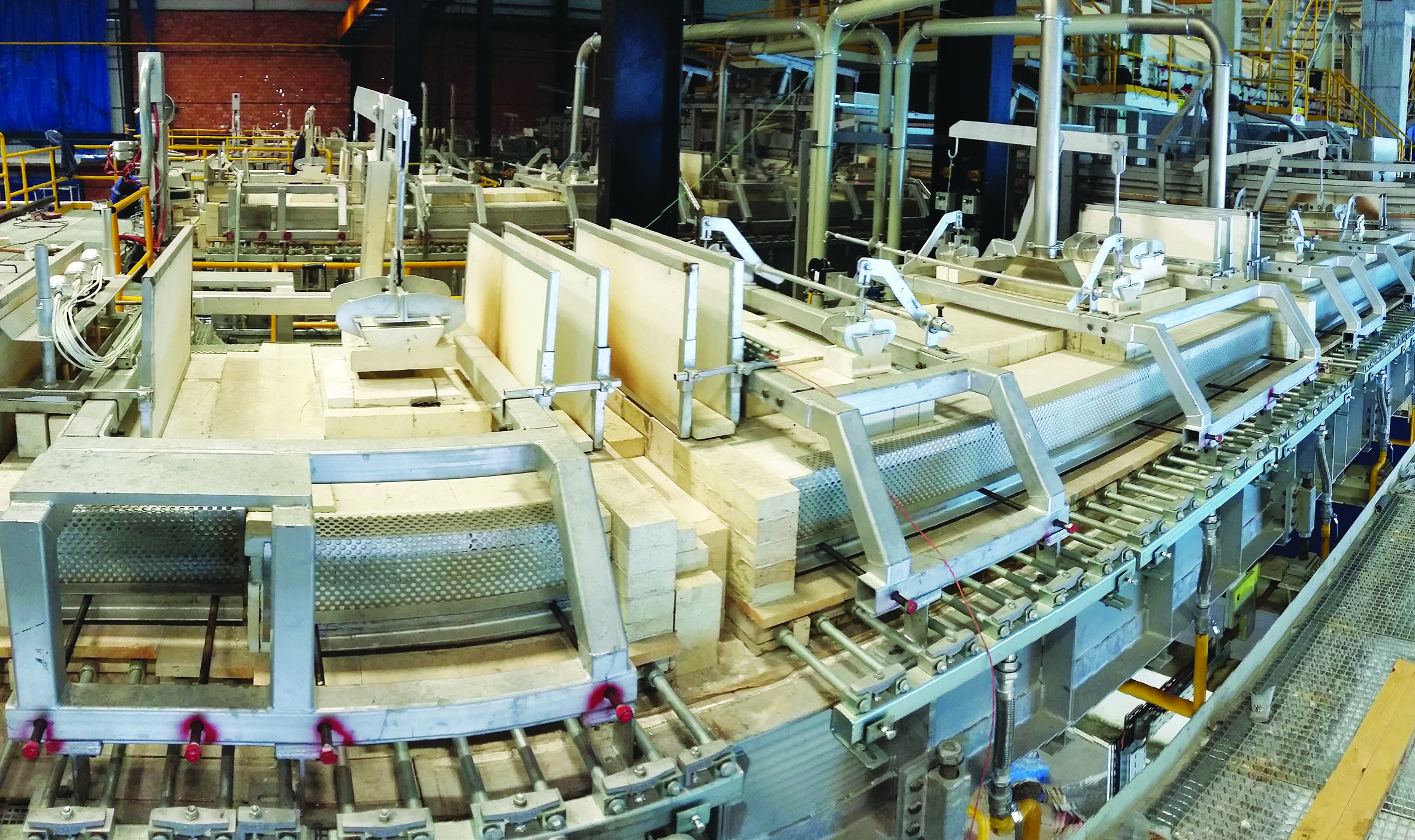As the international glass container industry attempts to remain competitive with PET by producing lightweight beverage bottles, the production of such bottles requires a fully understood NNPB forming process at high machine speeds. In order to obtain uniform wall thickness when the container is formed, the viscosity of the liquid gob has to be as homogenous as possible. This target is only attained by minimal temperature variations of the glass gob. At the end of the forehearth, before the glass enters the spout bowl, thermal homogeneity is measured and calculated by various – customer specific – formulae. The so-called ‘K-Factor’ is required to be beyond 95% over the entire production profile and different glass colours.
A second trend – caused by just-in-time production, of course in turn caused by the aim to save storage costs – shows that plants which are rebuilt or are greenfield projects, have enhanced requirements on forehearth performance regarding pull ranges. So the trend shows that nominal minimum and maximum loads spread. This is accompanied by a wider field in gob temperatures.
The recently designed GCS301 forehearth family is the answer from HORN Glass Industries to increase demand regarding forehearth flexibility and performance. Channel widths from 36in up to 54in are available.
Superstructure design
Going back to basics, the GCS301 forehearth works with concave-shaped cover blocks. There is a separation between the centre part and the outer part of the forehearth. The volume above the colder glass at the boundary area of the channel block is concaved and also the inner part to guide direct cooling air only via the centre.
The working principle is complete with lateral aligned chimneys and a central radiation opening. With these lateral and central openings, the waste gas patterns can be distributed over the entire glass surface or guided only to the required areas (centre or border) in each single section of the forehearth, except the equalising zone which is flat roofed.
Heating
The colder glass in the outer sections of the forehearth channel requires energy input in order to balance the temperature difference between the outside and inside. For this purpose, the forehearth is equipped with the above-mentioned cover blocks, to separate the left and right outer portion physically and to heat selectively.
The central section of this cover block is deeper and thus closer to the glass surface than the outer section. This results in a slope of the cover block from the outside to the inside. Regular pencil burners fire along the entire forehearth length.
Heat transfer from the flame gases is affected by both convection and radiation. From the sloped cover block part, the radiation of the flame gases is reflected towards the outer sections at the glass surface. And at the slope of the superstructure, the waste gases move in geared turbulences. So the heat is transmitted by convection from the flue gases to the glass surface in the colder outer section at an increased rate.
Cooling
The GCS system works with different cooling systems in order to cool down the hotter glass in the forehearth centre. For this purpose, indirect and direct superstructure cooling is employed by means of cooling air. At forehearths with frequent job changes and quick temperature adaptation, the indirect and direct air cooling will be installed in the superstructure. The system allows direct cooling air via the centre part or to spread over the entire surface by chimney adjustment, in the same way waste gases can be guided.
The aforementioned cooling systems are used in function of forehearth tonnage, inlet temperature and required gob temperature in various sizes and numbers. So each forehearth concept is adapted exactly to the specific requirements of the glass producer.
References
HORN Glass Industries has installed over 120 type GCS301 forehearth units for customers throughout the world. All have indicated satisfaction regarding control and function of the systems and also pointed out the reduced energy consumption of about 25%-30% compared to the previous HORN systems. Moreover, a thermal homogeneity index beyond 96% has been realised in several plants. This shows that the GCS301 forehearth is the ideal solution to comply with the industry’s highs for flexibility and performance.


